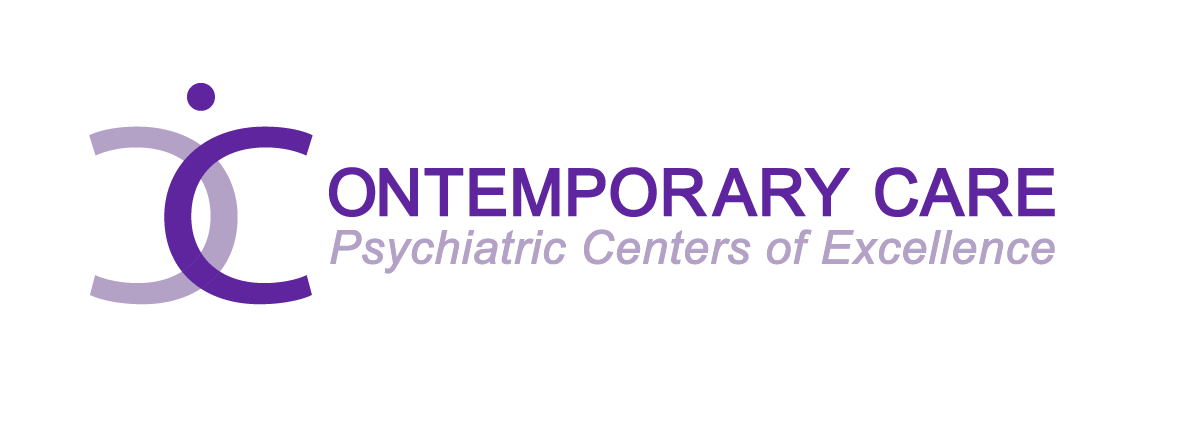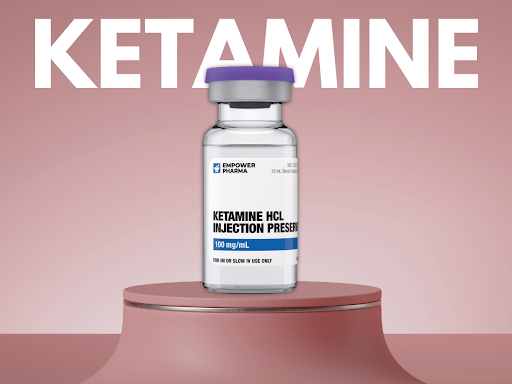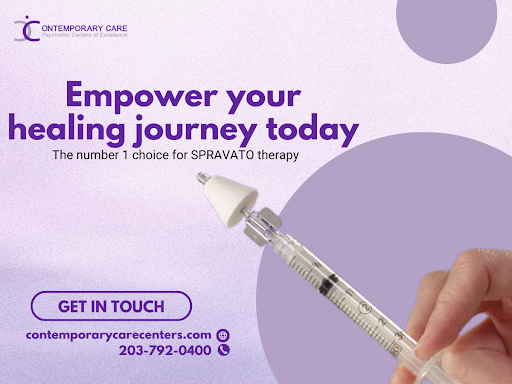Recently, a new medication called intranasal Ketamine has caught people’s attention. It’s a hopeful option for dealing with depression, especially when other treatments haven’t worked well. This new approach represents a significant change in how we treat depression. It’s a powerful tool for doctors and patients to fight this tough condition.
In this blog post, we’ll take a closer look at intranasal Ketamine and what it means for treating depression. We’ll explain what it is and how it works. Plus, we’ll talk about how it can quickly help people with depression, even when other treatments haven’t helped much.
Significance of Intranasal Ketamine in Depression Treatment
Intranasal Ketamine, a derivative of the anesthetic ketamine, is a breakthrough treatment for depression. This medication is administered through the nose, as it is a new way to help people with depression, especially if other treatments haven’t worked.
Ketamine nasal spray is a big step forward in treating depression. Unlike the oral antidepressant that can take weeks to work, ketamine works quickly, often within hours. This fast action is important for people with severe depression or thoughts of suicide because they need help right away.
Also, this medication has been shown to work well for people with treatment-resistant depression (TRD) and major depressive disorder (MDD) which means other treatments haven’t helped much. It works by targeting certain parts of the brain involved in depression, offering a new way to treat it.
1. Intranasal ketamine has been accessible for years, providing a familiar option for mental health treatment.
Intranasal ketamine has been widely available for years as a treatment option for mental health conditions. It provides a familiar choice for individuals seeking relief from depression, anxiety, and PTSD.
It contains both (S) and (R)-ketamine enantiomers. Compounded pharmacies can make intranasal ketamine spray. Low-dose ketamine has been in use for over 50 years. Intranasal ketamine is likely more effective than ketamine alone.
Compared to traditional antidepressants, intranasal ketamine offers a quicker onset of action, bringing relief from symptoms in a shorter time frame. Healthcare providers increasingly rely on Intranasal Ketamine as an alternative therapy for patients who haven’t responded to conventional treatments.
Its availability in intranasal form expands treatment options and allows for convenient administration either in a medical setting or by the patients themselves. Accepting intranasal delivery among medical professionals and patients makes it an acceptable treatment choice.
2. Intranasal ketamine has lower bioavailability than IV, affecting its effectiveness and dosing.
Intranasal ketamine, though effective, has a lower bioavailability compared to intravenous administration, meaning less of the drug reaches the bloodstream when taken through the nose.
Only about 25-50% of the ketamine sprayed into the nose enters the bloodstream. This means intravenous ketamine requires less to achieve the desired effect.
Lower doses are preferred to minimize potential liver and bladder side effects. Healthcare providers should monitor and adjust dosages accordingly for optimal outcomes.
Despite its lower bioavailability, intranasal ketamine remains a valuable option for mental health treatment. It offers convenience and accessibility for patients.
3. (R)-ketamine is more potent and longer-lasting than (S)-ketamine, impacting treatment and dosage.
Intranasal ketamine, with its (R)-ketamine component, is noted for its heightened potency and prolonged effects compared to (S)-ketamine, making it a preferred choice in some treatment scenarios.
This difference in potency influences the dosage needed for therapeutic benefits and the duration of action once administered. Patients may require lower doses of (R)-ketamine to achieve the desired treatment response, reducing the risk of potential side effects associated with higher doses.
In a recent animal study, (R)-ketamine demonstrated increased potency and prolonged duration compared to (S)-ketamine. This finding underscores the significance of both (R) and (S)-ketamine in maximizing the duration and strength of low-dose ketamine treatments.
Healthcare providers should carefully choose the appropriate ketamine formulation for patients, aiming to optimize treatment outcomes while minimizing potential side effects.
4. Efficacy for treatment-resistant depression may vary with intranasal ketamine, requiring careful monitoring.
The efficacy of intranasal ketamine in treating treatment-resistant depression (TRD) can vary from person to person, highlighting the importance of careful monitoring throughout the treatment process.
While some individuals may experience significant improvement in depressive symptoms with intranasal ketamine therapy, others may not respond as favorably.
Therefore, healthcare providers must closely monitor patients receiving intranasal ketamine to assess their response to treatment, adjust dosages if necessary, and address any emerging side effects or serious adverse events.
Regular check-ins and follow-up appointments allow healthcare professionals to track progress, make informed treatment decisions, and ensure the best possible outcomes for patients with TRD.
5. Ketamine is renowned for its favorable effects on blood pressure and heart rate.
Ketamine has been used widely in medicine since the 1960s for sedation during medical procedures and for inducing anesthesia before intubation. It’s known for its safe effects on blood pressure and heart rate.
A randomized controlled trial evaluates that Ketamine works mainly by blocking a specific type of receptor in the brain and spinal cord called the N-methyl-D-aspartate (NMDA) receptor. This action reduces the release of a glutamate chemical responsible for transmitting signals between nerve cells.
On average, patients treated with ketamine and its byproducts have a lower affinity for opioid receptors compared to the NMDA receptor. They also affect other receptors in the body, such as those involved in nicotine, muscle movement, and certain brain chemicals.
6. Using intranasal ketamine is a fast and non-invasive way to deliver analgesic relief for acute pain.
Intranasal ketamine offers a rapid and non-invasive approach to alleviate acute traumatic pain. This method allows quick absorption into the bloodstream, administered through the nasal passage. It leads to swift relief from discomfort.
Unlike some other pain relief methods, intranasal ketamine doesn’t require injections or invasive procedures, making it convenient and accessible for patients in various settings.
Its effectiveness in providing analgesia for acute traumatic pain makes it a good option for medical professionals who are looking for effective pain management strategies.
7. Ketamine is widely used in adults alongside opioid pain therapy in reducing the need for opioids.
Ketamine is frequently incorporated into treatment plans for adults undergoing opioid pain therapy. Ketamine nasal drops are widely used in adult emergency department patients for moderate to severe pain. By using ketamine alongside opioids, healthcare providers aim to reduce the reliance on opioid medications for pain management.
A randomized clinical trial demonstrates that Ketamine helps mitigate the risks associated with opioid use, such as dependence, tolerance, and potential adverse effects.
Additionally, ketamine’s unique mechanism of action provides analgesic effects that complement those of opioids, allowing for more effective pain relief with lower opioid doses.
The combination of ketamine and opioids offers a valuable strategy for optimizing pain management in adult patients.
Discover Intranasal Ketamine at Contemporary Care Centers in Connecticut
Contemporary care centers in Connecticut are at the forefront of mental health treatment, offering innovative therapies like intranasal ketamine.
At these cutting-edge care centers, patients access advanced therapies by experienced healthcare professionals. With Dr. Perera, an esteemed expert in the field, serving on Janssen’s Advisory Board and being part of their Speaker Bureau for SPRAVATO®, they ensure that patients receive the highest level of care.
Intranasal ketamine, administered through a nasal spray, has shown promising results in rapidly alleviating depressive symptoms and improving overall well-being. Patients undergoing intranasal ketamine therapy can expect personalized treatment plans tailored to their unique needs and goals.
With the guidance and support of skilled clinicians, individuals receive comprehensive care throughout their treatment journey, from initial evaluation to ongoing monitoring and adjustment of therapy as needed.
Contemporary care centers in Connecticut provide a comfortable and nurturing environment for patients to receive intranasal ketamine therapy. These facilities prioritize patient safety and comfort, ensuring that each individual feels supported and empowered on their path to healing.
By choosing intranasal ketamine therapy at modern care centers in Connecticut, individuals struggling with depression can access cutting-edge treatments that offer new hope for recovery. With a focus on compassion, innovation, and excellence in care, these centers are dedicated to helping patients achieve lasting relief and improved quality of life.
Discover the transformative potential of intranasal ketamine therapy at contemporary care centers in Connecticut and take the first step toward a brighter future today. With a commitment to offering innovative and effective solutions for individuals facing mental health challenges, we take pride in providing SPRAVATO® as a source of renewed hope and healing.
What Happens During Intranasal Ketamine Treatment?
During intranasal ketamine treatment, the patient typically self-administers the medication through a nasal spray device under the supervision of a healthcare professional. The procedure involves inserting the nasal spray device into the nostril and pressing the plunger to release the medication.
Once administered, ketamine is absorbed through the nasal mucosa and quickly enters the bloodstream, where it exerts its therapeutic effects. Patients may experience sensations such as light-headedness, dissociation, or mild hallucinations shortly after administration, which are temporary and typically resolve within minutes.
The healthcare provider monitors the patient throughout this treatment session to ensure safety and comfort. Depending on the treatment protocol, patients may receive multiple doses of intranasal ketamine over a series of sessions to achieve optimal therapeutic outcomes.
Intranasal ketamine treatment offers a rapid and convenient approach to managing treatment-resistant depression, providing patients with a potential avenue for relief when other treatments have been ineffective.
Who Should Consider Intranasal Ketamine in Connecticut?
Intranasal ketamine is recommended for adults facing the following challenges:
Treatment-Resistant Depression: If you have not responded to at least two antidepressant medications.
Major Depressive Disorder (MDD) with Suicidal Thoughts: For individuals battling MDD and experiencing suicidal thoughts.
At Contemporary Care Centers, we prioritize the safety of our patients by implementing similar protocols to the REMS guidelines for SPRAVATO®. Ketamine treatments are performed under the close supervision of our trained mental health professionals.
What are the Benefits of Intranasal Ketamine in Connecticut?
Intranasal Ketamine therapy in Connecticut provides a promising option for individuals seeking effective and innovative treatments for depression, chronic pain, and other mental health conditions. The benefits of intranasal ketamine treatment in Connecticut include:
- Convenient Administration: Intranasal ketamine can be self-administered by the patient using a nasal spray device, offering convenience and flexibility in treatment.
- Rapid Onset of Action: Ketamine administered intranasally is rapidly absorbed through the nasal mucosa, leading to a quick onset of therapeutic effects, potentially providing relief from symptoms of depression and other mental health conditions.
- Reduced Need for Opioids: Ketamine therapy may help reduce the reliance on opioid medications for pain management, offering an alternative approach to addressing acute and chronic pain.
- Treatment for Treatment-Resistant Depression: Intranasal ketamine is effective for individuals with treatment-resistant depression, providing hope and relief for those who have not responded to traditional antidepressant medications.
- Suicidal Ideation Management: Ketamine therapy can be beneficial for individuals with major depressive disorder (MDD) who experience suicidal thoughts, offering a potential intervention to address this critical aspect of mental health.
- Expert Supervision: Contemporary Care Centers in Connecticut offer expert supervision and guidance throughout the ketamine treatment, ensuring patient safety and optimal treatment outcomes.
Schedule an Appointment for Ketamine CT:
Empower your healing journey today. Take the first step towards exploring the transformative benefits of SPRAVATO® therapy by scheduling an appointment with us at 203-792-0400. Your path to renewed hope and mental well-being starts here.





